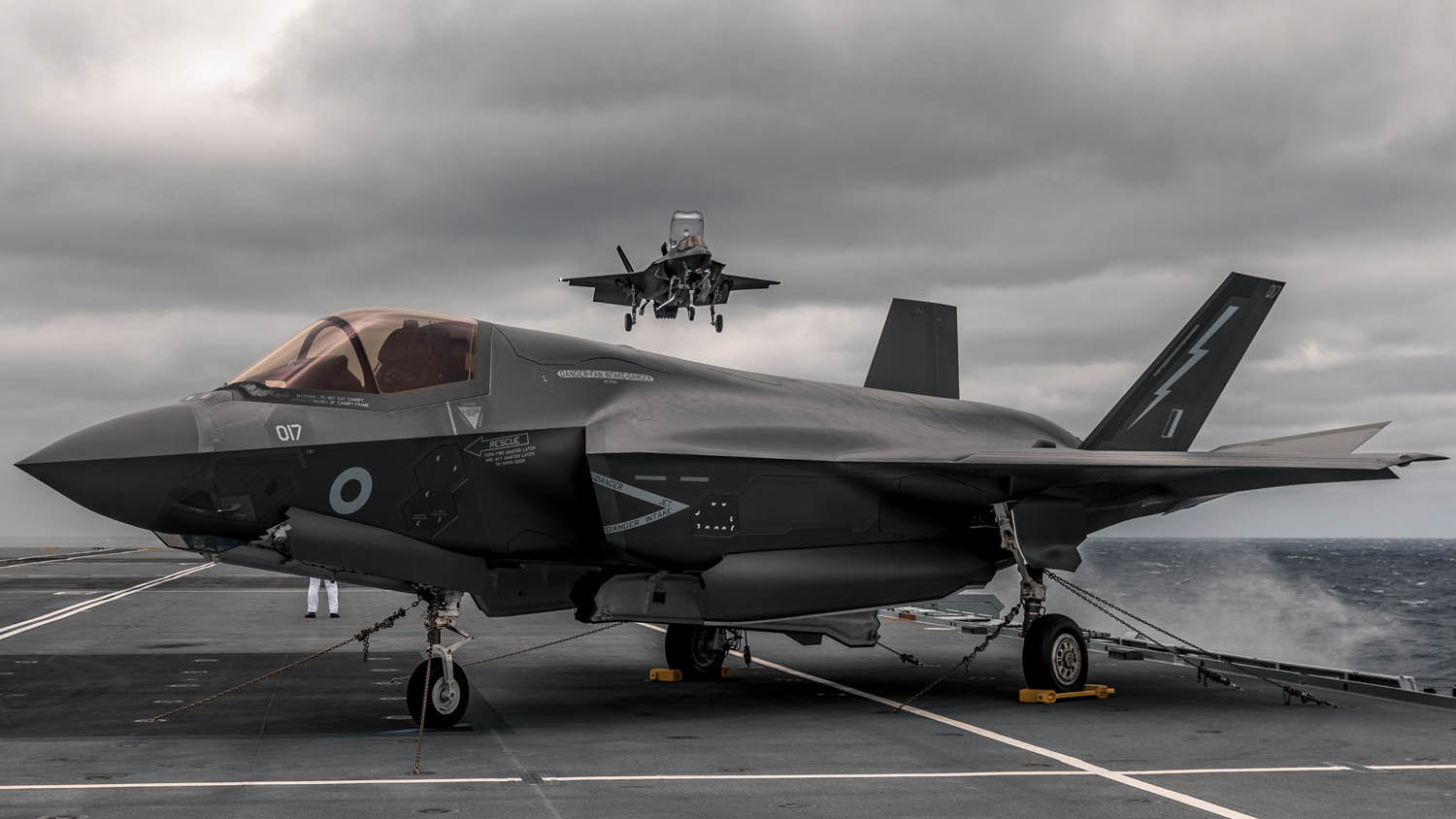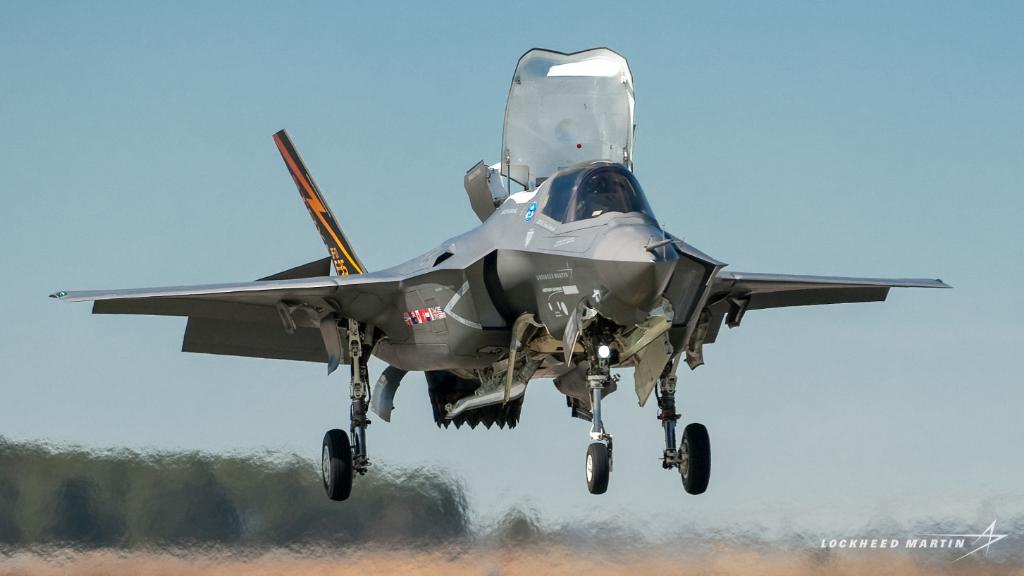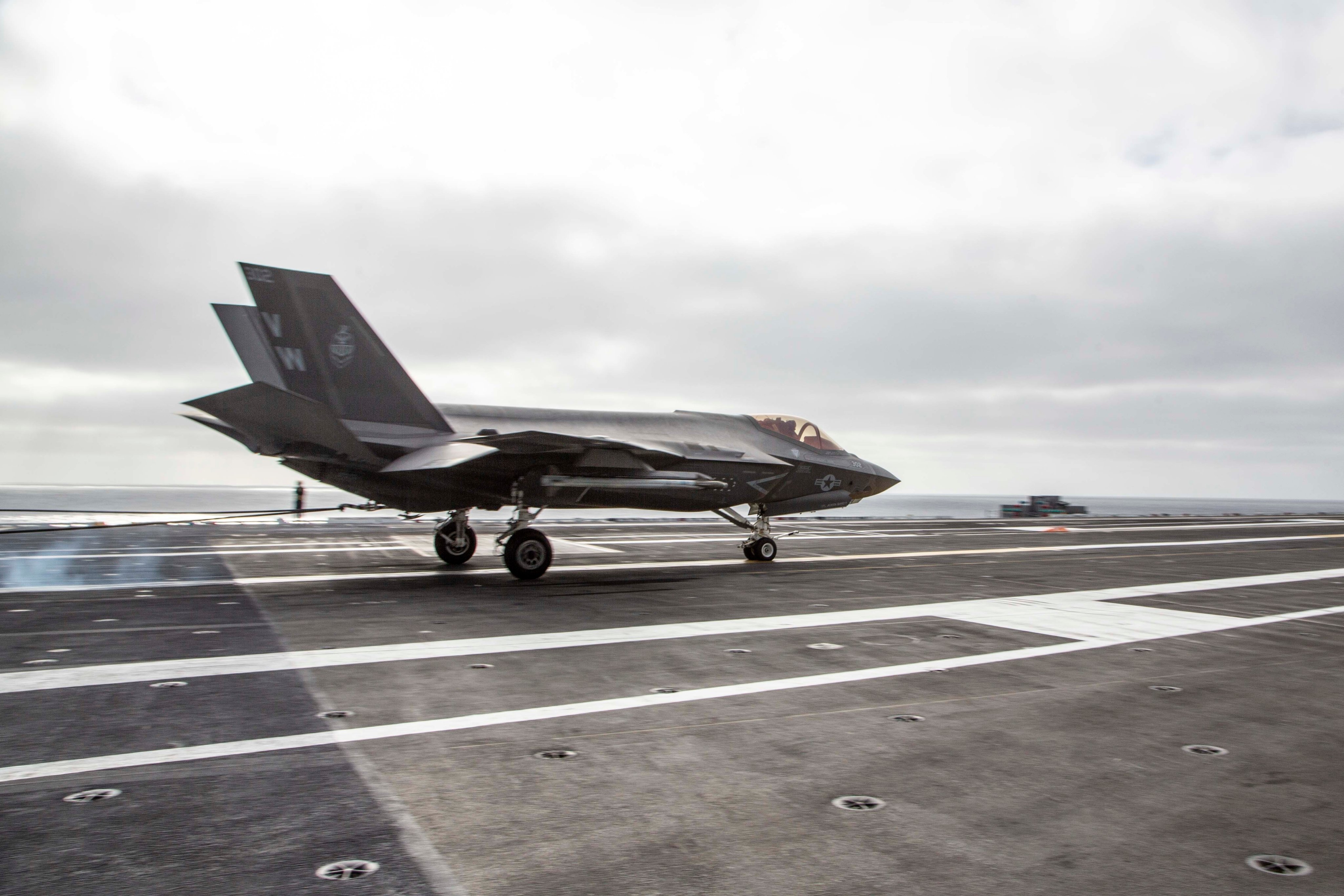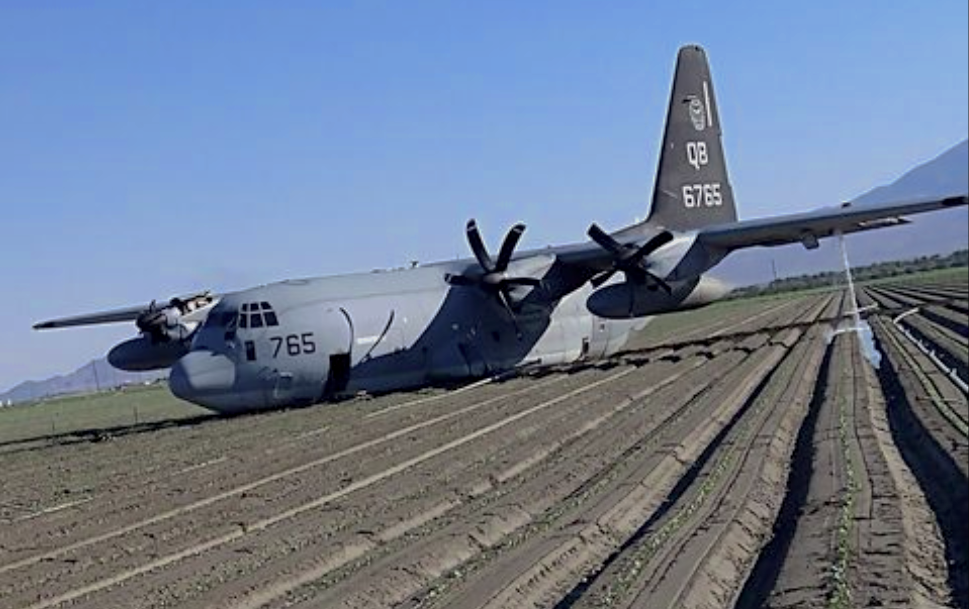In a major setback to the British Royal Navy, the world’s “most advanced” combat aircraft, an F-35 stealth fighter crashed in the Mediterranean on November 17. This is the fifth crash involving the fifth-generation warplane.
With S-400 In Kitty, Modi, Putin May Discuss Acquiring Russian S-500, S-550 Missile Systems During India Visit
On November 17, a British F-35B, which is the short take-off and vertical landing (STOVL) variant of the jet, crashed in the Mediterranean. The aircraft took off from the UK aircraft carrier Queen Elizabeth and came down shortly afterward.
The initial probe into the accident has ruled out the involvement of any other aircraft, which points to a human error or a technical snag. The British carrier has about 8 more F-35Bs along with another 10 of the US Marines. This is the first time a UK F-35 has crashed.

As part of the American F-35 international partners program, seven countries are currently using the fighter jet — the United Kingdom, Italy, the Netherlands, Australia, Norway, Denmark, and Canada.
Besides, six foreign military sales customers including Israel, Japan, South Korea, Poland, Belgium, and Singapore are also procuring and operating the aircraft, according to Lockheed Martin.
America has been pitching its modern fighter to other friendly countries. The fifth crash involving the F-35 would certainly put its credibility under the scanner. However, no immediate assessment could be made about a lag in future purchases given the unrivaled capabilities of the American fighter.
Russia Factor
The US has been requested to locate British F-35 aircraft to ensure the top-secret US stealth technology does not fall into Russian hands. The race is on to locate and recover the debris of the fighter before Russia can do it, which operates a Mediterranean naval base in the Syrian port of Tartus.

Meanwhile, British defense secretary Ben Wallace told Sky News that Russian fighters have been following Queen Elizabeth Aircraft Carrier, its top-secret jets and a flotilla of supporting ships as they returned from the maiden tour of the Far East.
Wallace did confirm that Moscow had displayed a great interest in HMS Queen Elizabeth and its F-35 fighters. Russia had earlier dispatched multiple fighters to “buzz” the British carrier strike group when it headed out through the waterway back in June, the report added.
“It is not a secret the Russians have been very interested in the carrier group both on the way out from the United Kingdom – as she’s sailed and her group towards the Pacific – and now she is back in the Mediterranean,” Wallace said.
F-35’s Crash Course
The F-35 Lightning II comes in three variants. The F-35A conventional takeoff and landing for the US Air Force, the F-35B STOVL for the US Marine Corps, and the carrier-capable F-35C for the US Navy. Even as it is now being operated by over 14 countries globally and has been successfully used in combat by Israel, a lot of work still remains.
The latest crash has once again brought the technical issues of the F-35 under the scanner. Even in the past, various snags led to accidents.
The first-ever crash involving the F-35 came a few days after it was lauded for its combat capabilities in 2018. A US Marine Corps F-35B in a training mission crashed at a Marine station in South Carolina.

The aircraft was completely damaged and preliminary assessment had pointed towards a faulty part, specifically, a faulty fuel tube in the engine responsible for the accident. However, this crash led to the grounding of the entire fleet of the F-35 and renewed inspection of every single fighter around the world.
The second crash was reported in 2019 in Japan when the F-35A joint strike fighter was on a training mission. The pilot had engaged in a dog fight with two others as part of the aerial combat training. However, the fighter soon crashed and went missing.
It was later found in the Pacific Ocean. Upon investigating, the Japan Air Self Defense Force (JASDF) concluded that the crash was a result of the pilot’s “spatial disorientation” and not a mechanical failure. However, no details about the investigation were divulged.
The third crash of the F-35 was reported in May 2020 in the United States again. A Marine Corps F-35A crashed at the Eglin Air Force Base in Florida. The aircraft went down when it was on a routine night sortie. Upon investigation, it was revealed that the pilot was fatigued leading to cognitive degradation.

However, there was a combination of technical and human factors involved. There was an unresponsive tail due to a flight logic control glitch, a misaligned helmet-mounted display on which the pilot was fixated, and a distracting green light on the display. The entire aircraft was destroyed and strewn around the runway. The pilot, however, ejected safely. This crash, being the third, raised concerns about safety.
The fourth crash happened in California in September 2020 and involved a Marine Corps F-35B. The fighter reportedly came down after clipping the wing of a Marine KC-130 refueling tanker in an incident of mid-air refueling. The pilot in this incident had ejected safely and the tanker had made a safe emergency landing. Both aircraft were taking part in the seven-week Weapons and Tactics Instructors course.
F-35 Marred By Glitches
The F-35 was designed to replace outdated fighter aircraft such as A-10s and F-16s in the United States Air Force, F/A-18s in the United States Navy, AV-8B Harriers and F/A-18s in the United States Marine Corps, among others.
It is called the world’s most advanced stealth multi-role fighter, with a slew of next-generation capabilities. However, it has often been flagged for many technical issues that have inconvenienced the pilots.
F-35B Crashing Ground After Mid-Air Collision With KC-130J pic.twitter.com/dPBdVjokJ9
— vladvlad (@vladwlad777) September 30, 2020
The most significant issue related to the aircraft has been the irregular oxygen flow in the aircraft that causes discomfort and fatigue to the pilot.
“F-35’s breathing system delivered an unpredictable amount of airflow at the beginning, middle, and end of each breath and that it changed from breath-to-breath,” a NASA study had revealed, as previously reported by EurAsian Times.
The irregular oxygen flow was also flagged by the pilot of the Eglin crash in 2020. He had reportedly revealed that he felt more fatigued in this aircraft as compared to his previous ones.
In July this year, a report by the Defense News had listed three technical irregularities that have not been resolved in the aircraft yet. It said that the cockpit pressure needed to be fixed as it caused extreme sinus pain and barotrauma among pilots.

Another concern flagged by the report was that the night vision camera incorporated in the F-35 helmet could produce horizontal green lines during the nighttime with low ambient light, making it more difficult for pilots to land on ships.
The report also mentioned how the array radar needed an upgrade so as to allow the aircraft to scan a wider area while in sea search mode.
The latest crash can be positively exploited by America’s arch-rivals, Russia and China. With Russia aggressively promoting its Su-57 and newly unveiled Su-75 checkmate and China projecting its J-20 Mighty dragon on par with the F-35, the narrative could become even fiercer.
Both countries can potentially take it as an opportunity to sell their own advanced combat jets. However, the F-35 program still retains a reputation that’s hard to match. The alacrity with which the manufacturer decides to fix the technical issues might decide the future of the fighter jet.
- Contact the author at sakshi.tiwari9555@gmail.com
- Follow EurAsian Times on Google News




